MARIANI’S
Virtual
Gourmet
February
19, 2017
NEWSLETTER

ANDY WARHOL
IN THIS ISSUE
VIENNA, Part One
By John Mariani
NEW YORK CORNER
BENOIT NYC
By John Mariani
NOTES FROM THE WINE CELLAR
2013 AMARONES DEBUT
by Patricia Savoie
❖❖❖
VIENNA,
Part One
By John Mariani
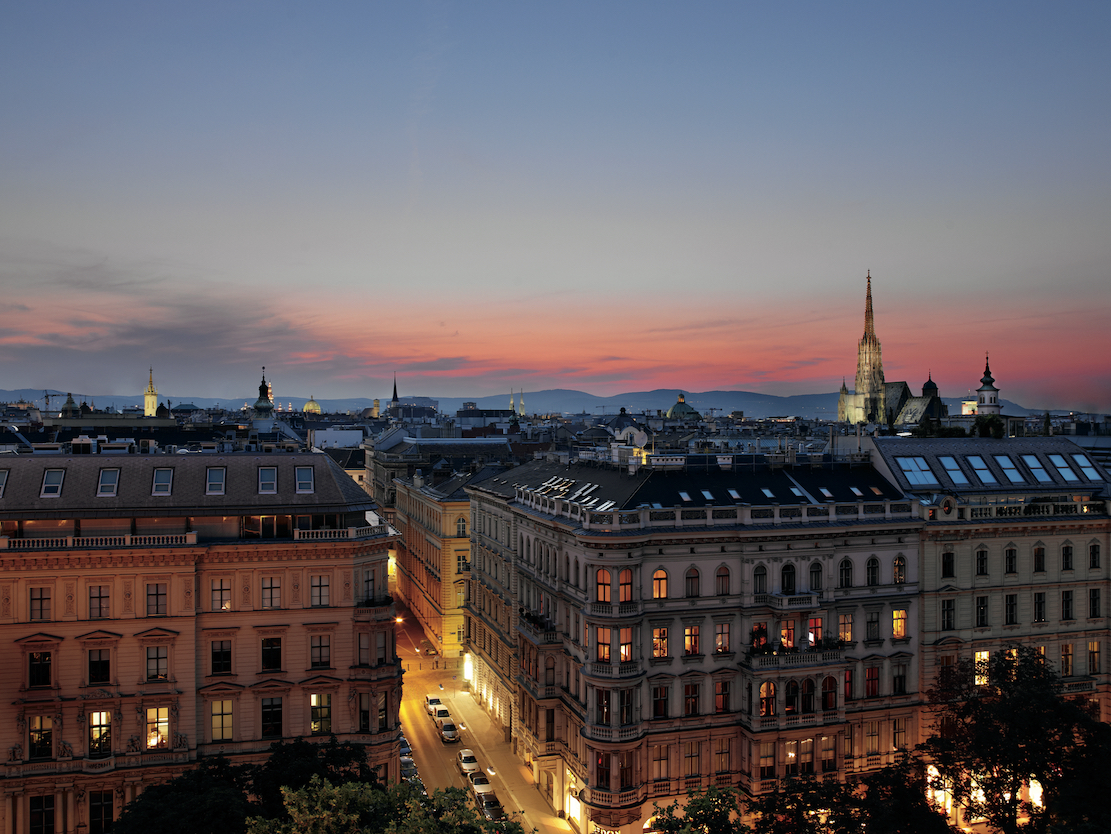
ROOFTOP VIEW OF VIENNA FROM THE RITZ-CARLTON HOTEL
I
doubt anyone would question the superlative that
Vienna is one of the most beautiful
cities in Europe, with a level of
sophistication that surpasses any shy of Paris.
 Given its
central location on the continent, just a few
miles from the Czech Republic, Slovakia and
Hungary, Vienna has always drawn in other cultures
that have influenced its history, science, art,
history and cuisine. It was once a royal city and
capital of the vast Austro-Hungarian Empire, and
152 years ago Franz Josef I created the
Ringstrasse that encircles the city’s historic
center, still dotted with historic cafés, and
around which runs the always-on-time tram and puts
you within walking distance of every grand
attraction, from the Hofburg
Palace, the Rathaus Town
Hall, Parliament and State Opera (left) to the
magnificent museums that include Kunsthistorisches
Museum (below)—which has the world’s
greatest collection of Breughels—the endless
corridors of the Naturhistorisches
Museum,
and the very modern Museumsquartier,
converted from the former Imperial Stalls.
Given its
central location on the continent, just a few
miles from the Czech Republic, Slovakia and
Hungary, Vienna has always drawn in other cultures
that have influenced its history, science, art,
history and cuisine. It was once a royal city and
capital of the vast Austro-Hungarian Empire, and
152 years ago Franz Josef I created the
Ringstrasse that encircles the city’s historic
center, still dotted with historic cafés, and
around which runs the always-on-time tram and puts
you within walking distance of every grand
attraction, from the Hofburg
Palace, the Rathaus Town
Hall, Parliament and State Opera (left) to the
magnificent museums that include Kunsthistorisches
Museum (below)—which has the world’s
greatest collection of Breughels—the endless
corridors of the Naturhistorisches
Museum,
and the very modern Museumsquartier,
converted from the former Imperial Stalls.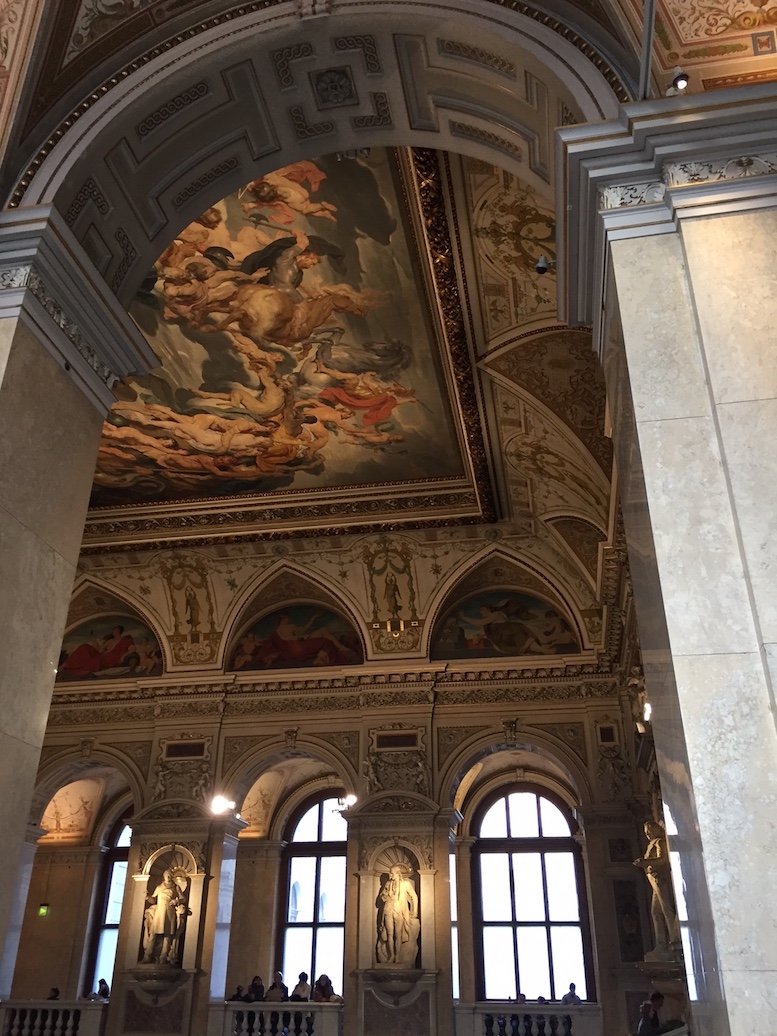
Simply strolling along the
broad, winding Kärntner Strasse, lined with designer boutiques,
cafés, chocolate shops, restaurants and street
performers, is a sure way to get a palpable sense
of Vienna’s street life. Dominant on the Strasse is St.
Stephen's Cathedral (below),
dating, as a smaller church, back to 1147. Saved
from destruction in World War II only because a
German captain refused his superior’s orders to
reduce it to rubble, it has been undergoing
renovation ever since, with most of the exterior
scrubbed clean, though the interior is still dark
with centuries of soot and grime.
Of course, like Salzburg,
Vienna is one of the world’s great music cities.
Franz Schubert, Johann Strauss and Arnold
Schoenberg were born there, and Mozart,
Salieri, Beethoven, Haydn, Mahler, Liszt,
Bruckner and Brahms all came to work there.
All have their works performed throughout the year
at many venues —the State
Opera, Musikverein
Golden Hall and Konzerthaus,
the Volksopera, and Kursalon concert hall.
 Like
all great capitals, Vienna has its great
hotels—the Imperial, the Sacher, the new Park
Hyatt—all of them completely brought up to 21st
century standards.
This year my wife and I stayed at the Hotel
Ritz Carlton Vienna and the Hotel Grand Ferdinand
nearby, both proximate to the Ringstrasse.
Like
all great capitals, Vienna has its great
hotels—the Imperial, the Sacher, the new Park
Hyatt—all of them completely brought up to 21st
century standards.
This year my wife and I stayed at the Hotel
Ritz Carlton Vienna and the Hotel Grand Ferdinand
nearby, both proximate to the Ringstrasse.
The Hotel Ritz
Carlton Vienna is composed of four
historic palaces in different
architectures—Renaissance, baroque and
Gothic—along with magnificent 19th century marble
staircases with superb ceiling murals, to which
have been added a very modern lobby and lounge,
done in an equestrian motif, a spa and indoor 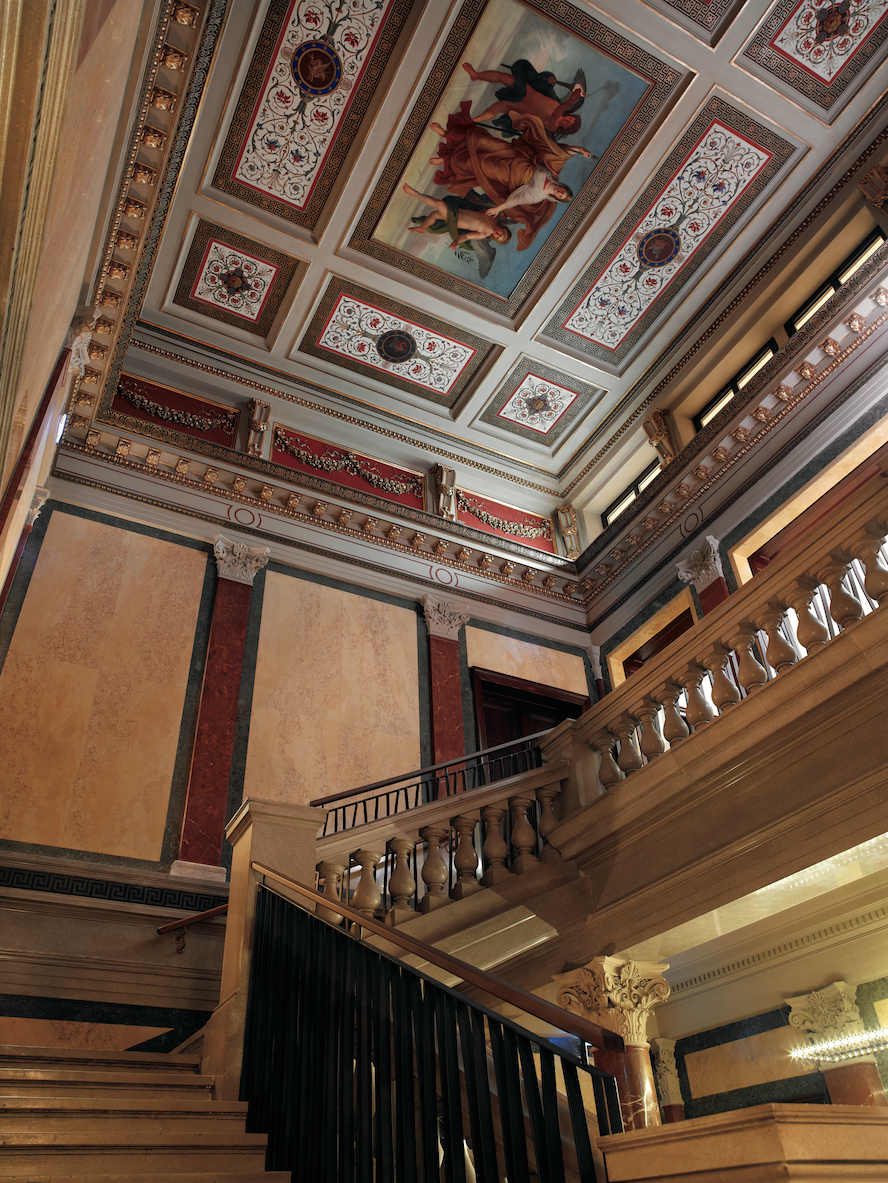 pool (with
underwater music) and rooftop bar. The bar has a
breathtaking panorama on the city and in December
turns into a cheery Christmas market and place to
get hot drinks.
pool (with
underwater music) and rooftop bar. The bar has a
breathtaking panorama on the city and in December
turns into a cheery Christmas market and place to
get hot drinks.
The
hotel’s 202 rooms (above) and 43 suites achieve a
balance of comfort and modern amenities that go
with being a five-star property, and it’s no
wonder the extravagant Crystal Ballroom and
other banquet rooms host more than 450 balls each
year. The
Ritz-Carlton Club Lounge, located on the 7th
floor, not only offers morning through evening
respite and good food, but I found the concierge
could not do enough to help my wife and me with
plans and change of plans.
(Next week I shall report on
the hotel’s unique DSTRIKT Steakhouse, which has
garnered great popularity. )
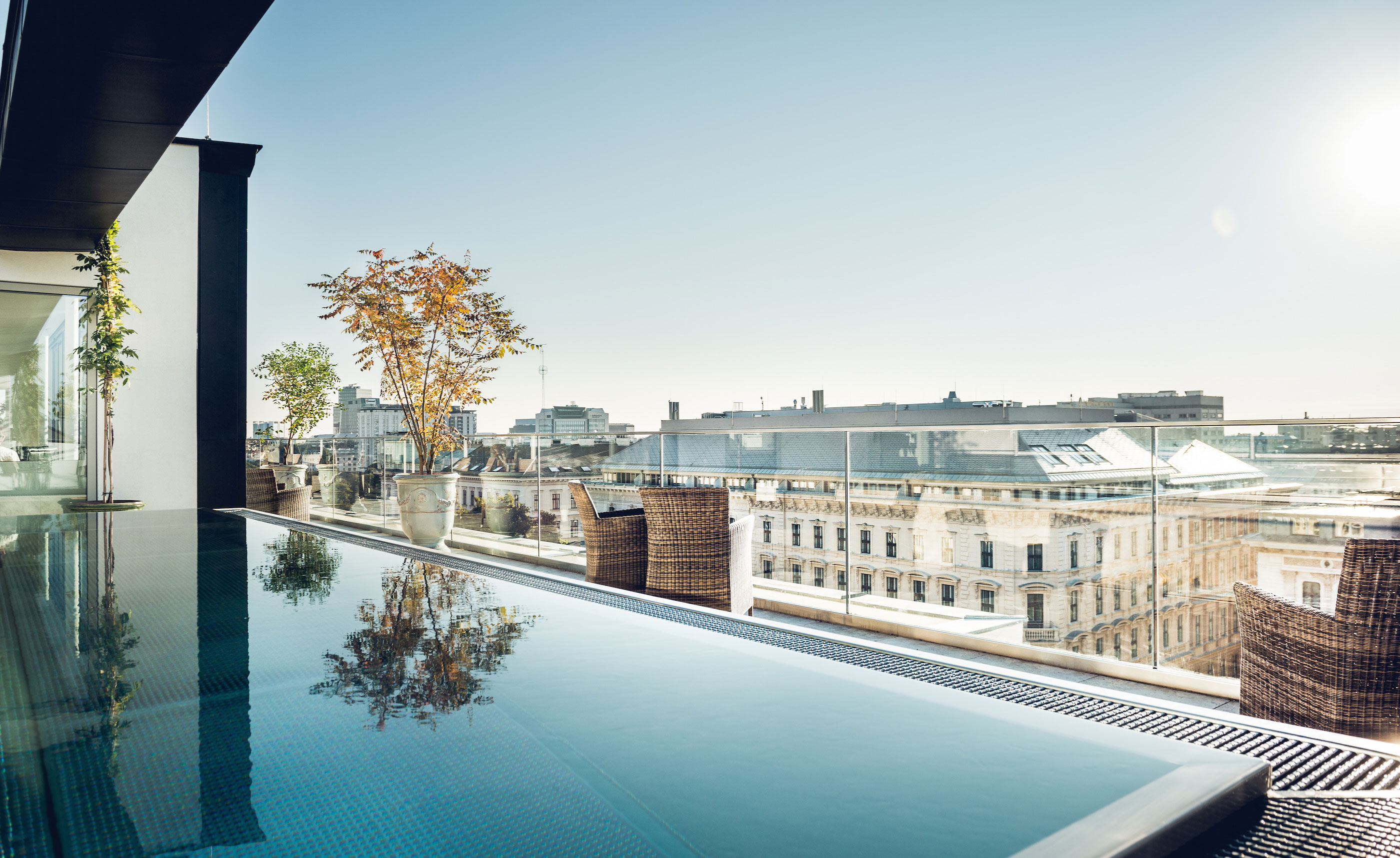 The owner of the Hotel Grand
Ferdinand, Florian Weitzer, says that his
aim upon taking over a landmarked 1950s building,
once headquarters for the
research company Veitscher Magnesitwerke AG, was
to make it “splendidly contemporary, free of
forced flashbacks—and filled with unparalleled
spirit." He calls it “Viennese Elegance
Re-Loaded.” In that spirit he named it in honor of
Emperor Ferdinand, retaining several of his
favorite recipes in the Restaurant Am Ring (of
which I shall write next week) and in the
building’s Grand Étage above Vienna's rooftops, which is
used for the breakfast buffet, as well as lunch
and dinner.
There’s also a rooftop pool (left)
overlooking the city.
The owner of the Hotel Grand
Ferdinand, Florian Weitzer, says that his
aim upon taking over a landmarked 1950s building,
once headquarters for the
research company Veitscher Magnesitwerke AG, was
to make it “splendidly contemporary, free of
forced flashbacks—and filled with unparalleled
spirit." He calls it “Viennese Elegance
Re-Loaded.” In that spirit he named it in honor of
Emperor Ferdinand, retaining several of his
favorite recipes in the Restaurant Am Ring (of
which I shall write next week) and in the
building’s Grand Étage above Vienna's rooftops, which is
used for the breakfast buffet, as well as lunch
and dinner.
There’s also a rooftop pool (left)
overlooking the city. Wi-Fi
is free and there is an exercise room.
Wi-Fi
is free and there is an exercise room.
The rooms
and suites have a canny blend of contemporary
black-and-white minimalist design and Secessionist
flourishes in claw-foot bathtubs, tufted divans,
round mirrors and glass brick walls (right). There
is one unusual room, called the Dorm, set up with
eight bunk beds and brass ladders, surrounded by
polished, cherry-stained wood, as if awaiting a
teenage aristocrat and his chums on a lark in the
city.
A FEW NOTES ABOUT
VIENNA
•
Just about everyone speaks excellent English in
hotels, restaurants, shops, cafés and on the
streets.
 • Buy a Wien-Karte
(Vienna Card) coupon book with more than 210
discounts at
museums,
sights, theaters, concerts, shops, cafés,
restaurants, and free travel on Vienna's public
transport system for 24, 48 or 72 hours
(€13.90/€21.90/€24.90). You
can easily purchase them at your hotel and the
Tourist Office at Albertinaplatz at
the Vienna Main Station or on-line.
• Buy a Wien-Karte
(Vienna Card) coupon book with more than 210
discounts at
museums,
sights, theaters, concerts, shops, cafés,
restaurants, and free travel on Vienna's public
transport system for 24, 48 or 72 hours
(€13.90/€21.90/€24.90). You
can easily purchase them at your hotel and the
Tourist Office at Albertinaplatz at
the Vienna Main Station or on-line.
•
Gas stations are few and far between in the city,
so gas up with discretion, and fill up before you
return a rental car.
• Wi-Fi Internet access on the streets is spotty,
but the cafés and shops are quite happy to link
you to their hot spots.
• ATMs are abundant.
• Since service charges in hotels are included,
minimal tips are recommended—a euro or two—for
porters and chambermaids.
• The Viennese are music mad, so plan ahead for
tickets to the opera and the endless series of
Mozart and Austrian music concerts. Check
with your concierge.
❖❖❖
By John Mariani
Photos by Pierre Monetta
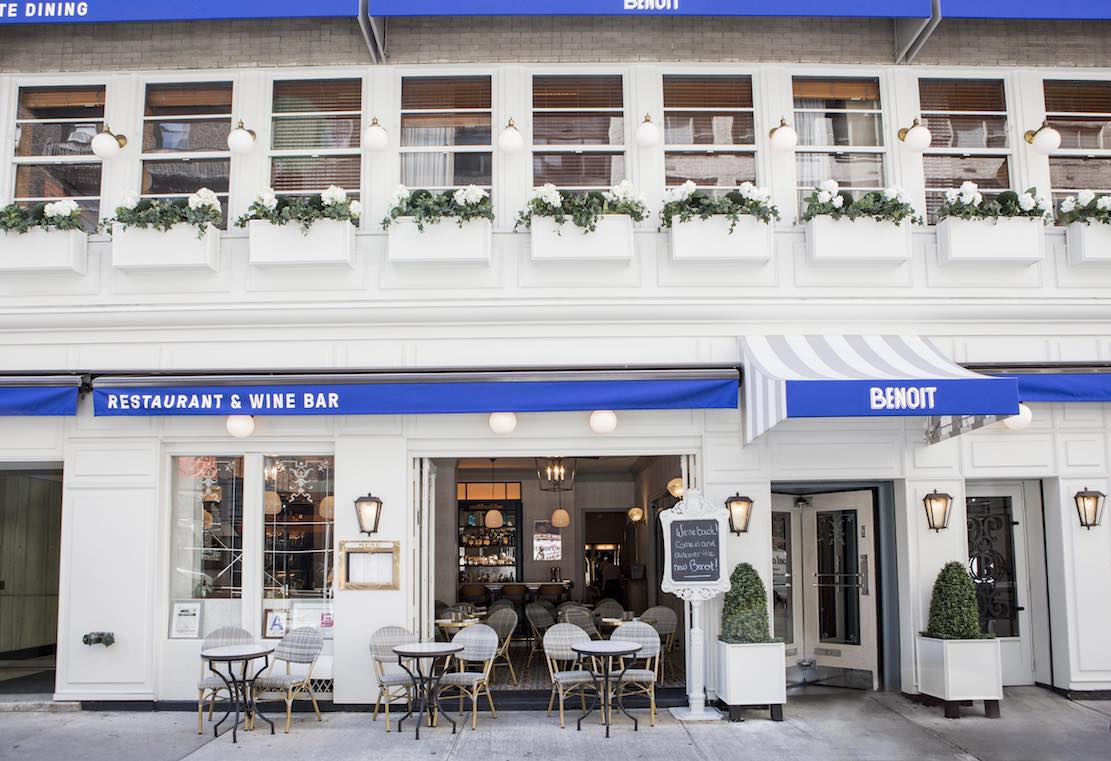 BENOIT
BENOIT60 West 55th Street (near Sixth Avenue)
212-943-7373
It’s
now been nine years since The Ducasse Group
opened Benoit New York, an offshoot of the Paris
original opened in 1912 in the 4th
Arrondissement at 20 Rue Saint-Martin, and
now with another branch in Tokyo. Through
some ups and downs, but with only three chef
changes, the New York operation has become a
stalwart among the West Side of Manhattan’s
French bistros and a mainstay of the Theater
District. 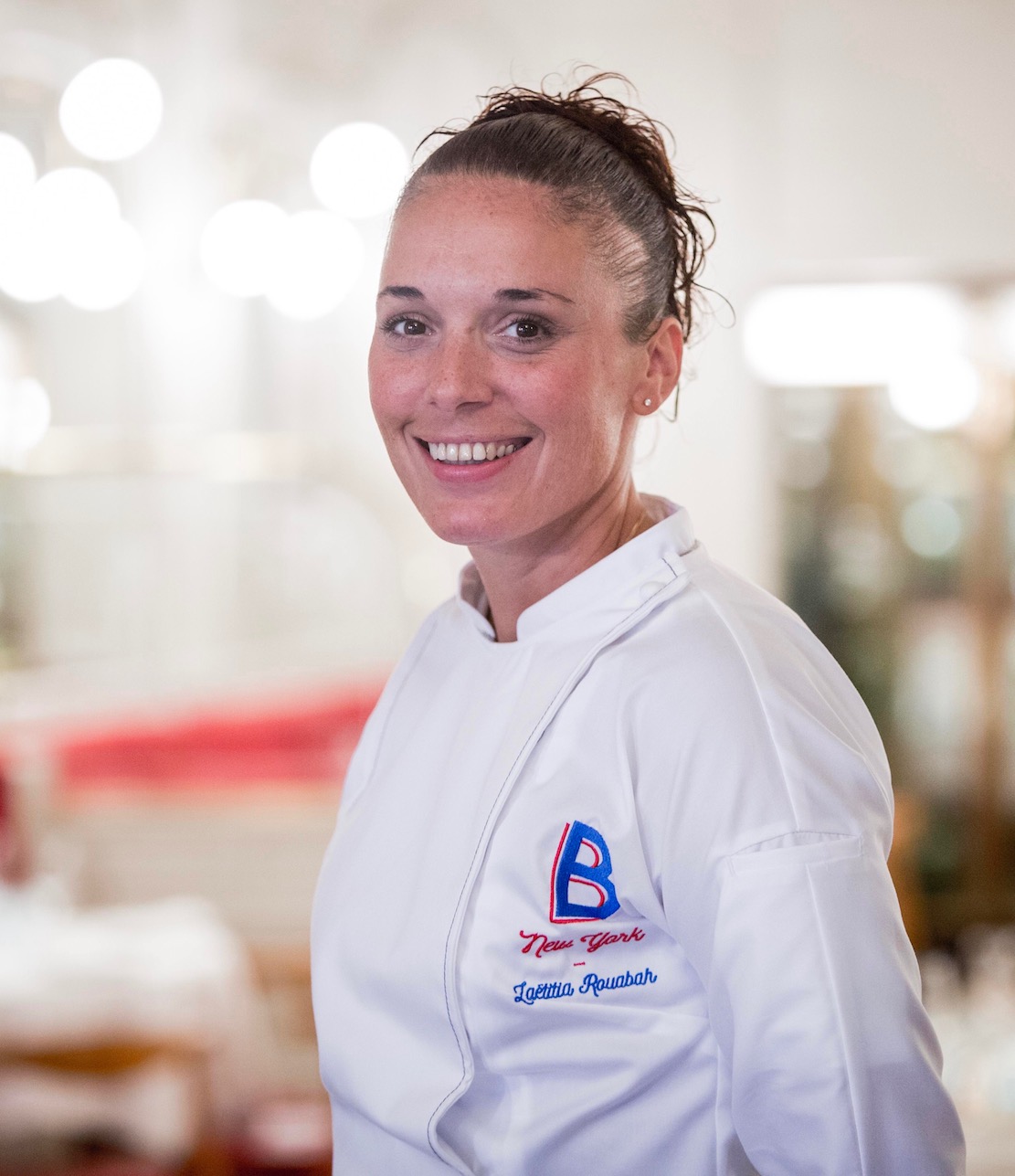
Now there is a new
chef—Benoit’s first woman—a Parisian named
Laëtitia Rouabah, previously at Allard in her
hometown, who is carefully balancing traditional
French bistro cooking with the evolution of modern
cuisine. She’s
kept the majority of dishes that have always been
on the menu at Benoit, from a textbook perfect
onion soup gratinée ($16) and pig’s trotter
(offered as part of the hors d’oeuvre) to an array
of charcuterie.
Gone, at
least for now, are the lobster 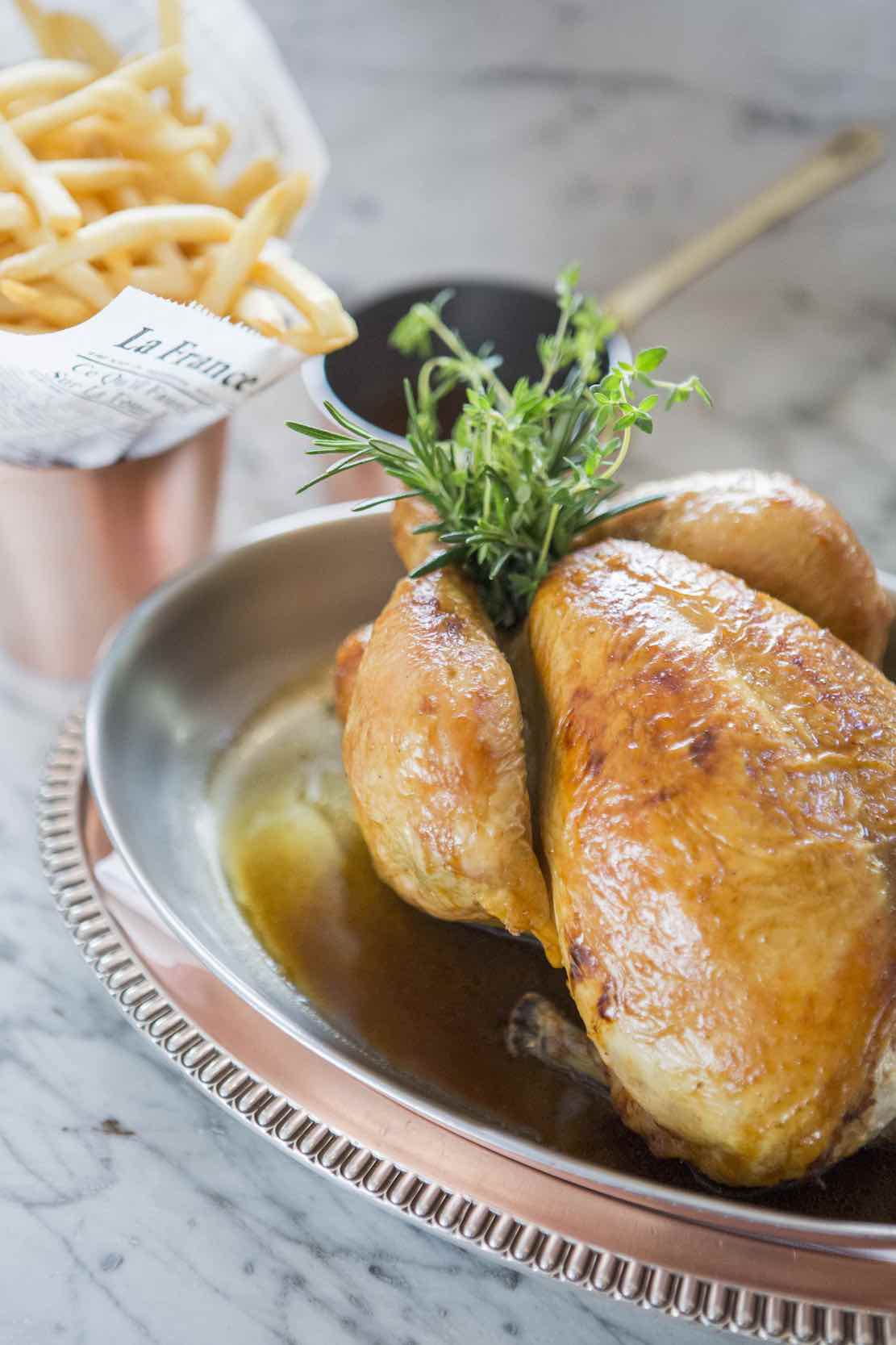 bisque, in
favor of a creamy chestnut soup ($16), the
quenelles of pike with sauce Nantua and the
brandade. In their place are new dishes, including
a seaweed striped bass with spelt and olive-lemon
condiment ($40) and a silky roasted cod with a
tart-sweet mango-and-passion fruit rougaille
sauce ($36).
You also still get a complimentary
plate of puffy, cheesy gougères,
and good bread and butter.
bisque, in
favor of a creamy chestnut soup ($16), the
quenelles of pike with sauce Nantua and the
brandade. In their place are new dishes, including
a seaweed striped bass with spelt and olive-lemon
condiment ($40) and a silky roasted cod with a
tart-sweet mango-and-passion fruit rougaille
sauce ($36).
You also still get a complimentary
plate of puffy, cheesy gougères,
and good bread and butter.
The roast chicken, once only
available for two, now may be ordered for one
($30, or $55 for the whole bird), and it is a very
generous portion indeed, its skin golden and
crisp, the interior juicy, the bird itself quite
flavorful, as are the accompanying French fries in
a paper cone.
No one ever leaves the table without
polishing them all off.
The Alsatian tarte flambée
is—hurrah!—still on the menu, a very crispy
flatbread mounted with plenty of bacon, cheese and
sweet caramelized onions ($14), while the flakey pâté en
croûte ($19) dates back to an 1892 a recipe
by Master Chef Lucien Tendret; it stays put on the
menu for all the right reasons. 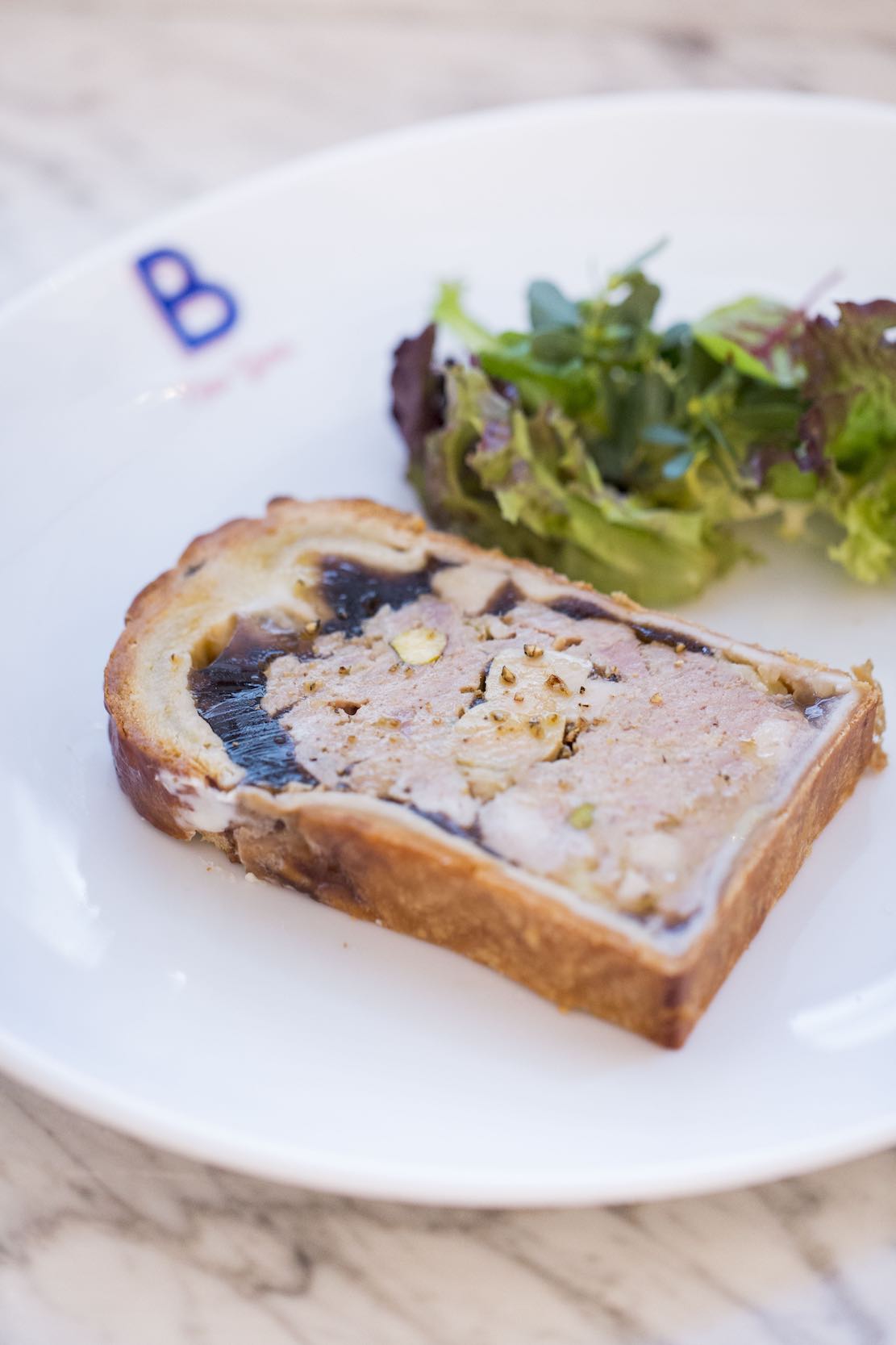 So,
too, is a steak tartare with mesclun ($32), chopped
by hand for the ideal texture, chunky, not ground,
and the savory seasonings never detract from the
flavor of the good beef.
So,
too, is a steak tartare with mesclun ($32), chopped
by hand for the ideal texture, chunky, not ground,
and the savory seasonings never detract from the
flavor of the good beef.
It’s winter and cassoulet
($38) is on the menu, so it was requisite to
order, but ,while it had good, dark, winey, rich
flavors and plenty of pork, beans, sausage and
duck confit, it lacked the traditional crusted
top. I
defer to Larousse
Gastronomique, which has two pages on the
subject, noting in typical French academic style
that way back in 1906 “the Grand États Genèreaux
de la Gastronomie française” decreed what a cassoulet
must contain:
“Above all, purists insist on breaking the
gratin crust several times (seven times in
Castelnaudary and eight times in Toulouse.” For
some reason, Benoit’s cassoulet has
never had a crust that would hold up to a single
blow of the spoon.
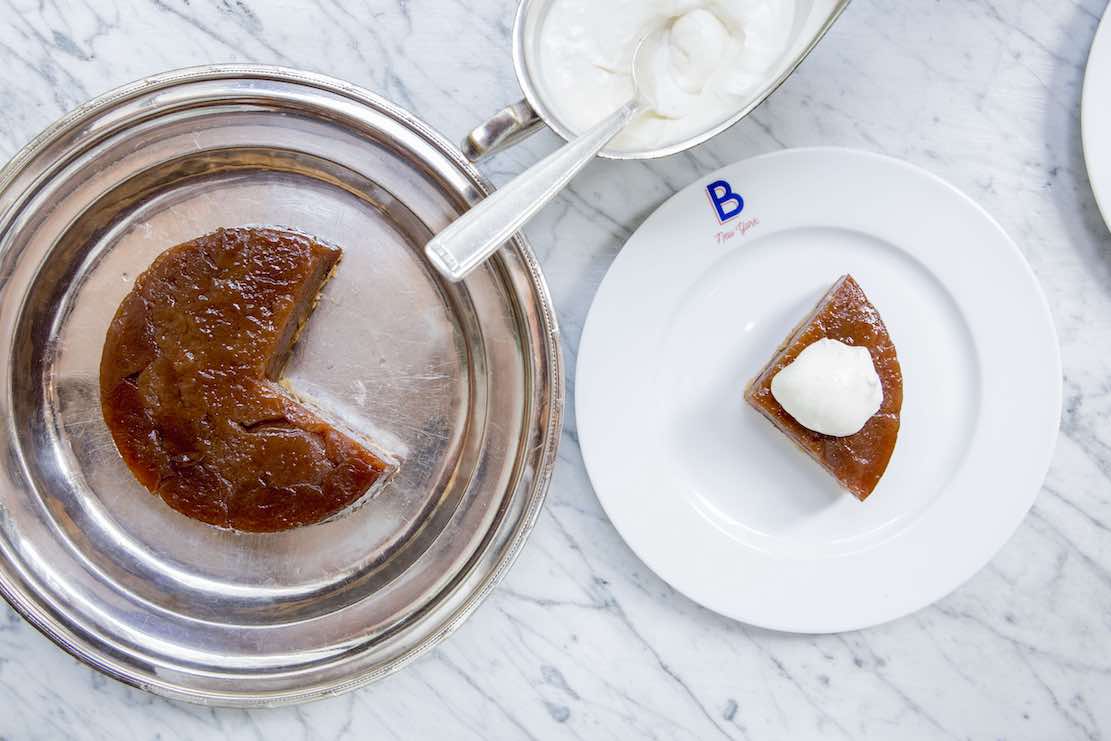 Desserts
are better than ever, including a baba doused with
Armagnac and lavished with crème fraîche ($12) and
an impeccably cooked hazelnut soufflé with
grapefruit sorbet ($14), not too soft, not too
firm, not too eggy.
Benoit’s superb tarte Tatin costs $24
because it is more than ample for two, even four,
people, and it is much closer to the century-old
Tatin sisters’ original recipe of cooked apples
with plenty of butter on an inverted crisp pastry
crust than to those flat apple tarts now found
everywhere going without shame by the same name. Benoit's
profiteroles require fondue forks to dip the
puff pastries into hot chocolate ($22), but, since
they are intended to be shared, they work and it's
a good dessert.
Desserts
are better than ever, including a baba doused with
Armagnac and lavished with crème fraîche ($12) and
an impeccably cooked hazelnut soufflé with
grapefruit sorbet ($14), not too soft, not too
firm, not too eggy.
Benoit’s superb tarte Tatin costs $24
because it is more than ample for two, even four,
people, and it is much closer to the century-old
Tatin sisters’ original recipe of cooked apples
with plenty of butter on an inverted crisp pastry
crust than to those flat apple tarts now found
everywhere going without shame by the same name. Benoit's
profiteroles require fondue forks to dip the
puff pastries into hot chocolate ($22), but, since
they are intended to be shared, they work and it's
a good dessert.
The wine list is extensive,
especially for a bistro, with more than 40
Champagnes, 11 Chablis (the classic bistro wine),
and plenty of regional wines, and prices are
actually not bad by NYC standards. Cocktails 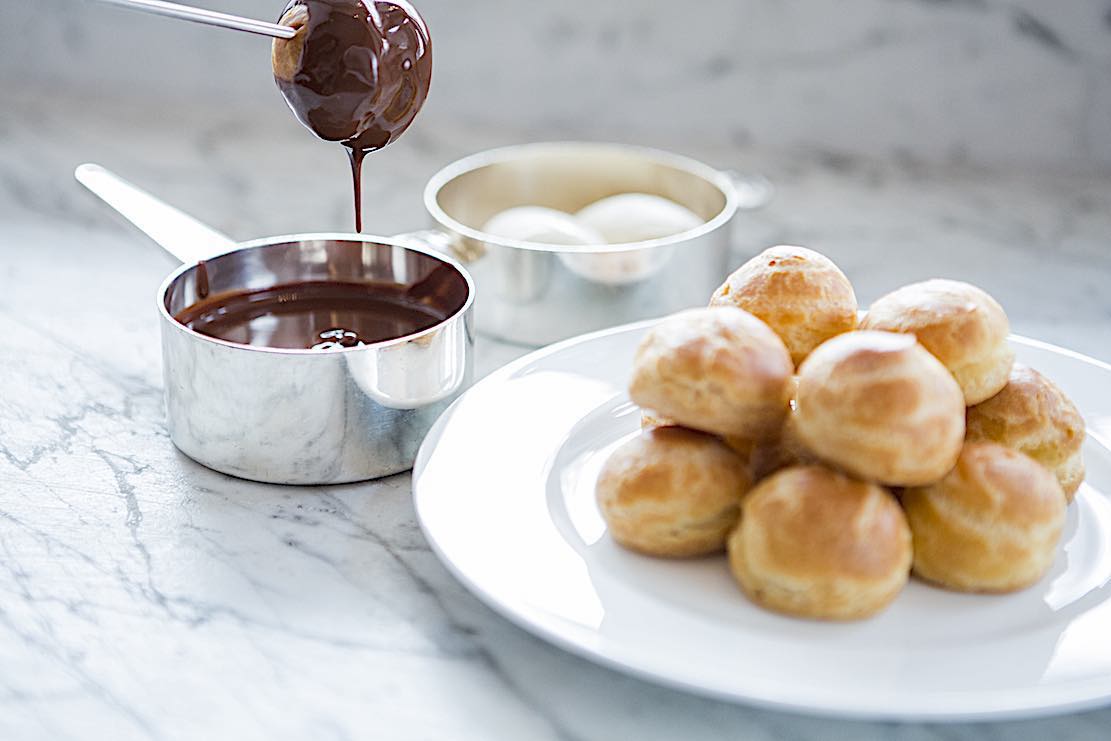 run
$14-$15.
run
$14-$15.
I
regret ending this report with a description of
what must be among the worst re-decoration of a
once beautiful restaurant in memory—right up there
with when the Grand Central Oyster Bar’s historic
ceiling tiles were once painted a ghastly
aqua blue. Benoit
NYC did not look very much like the Paris
original, but it was a joy to be in on its own:
You’d enter the red-faced building through a revolving door, with a
jaunty bar to the left, then be ushered into a
good-
sized dining room done up in golden-blond wood,
bright red banquettes, brass railings, tile
floors, wall scones, mirrors and an enchanting
trompe l'œuil cloudy blue sky above you.
For reasons that escape me,
everything but the red banquettes has been
transformed into a monochrome room the color of
Milk of Magnesia. The wood-paneled walls have been
whitewashed, the bar is now almost denuded of
color. 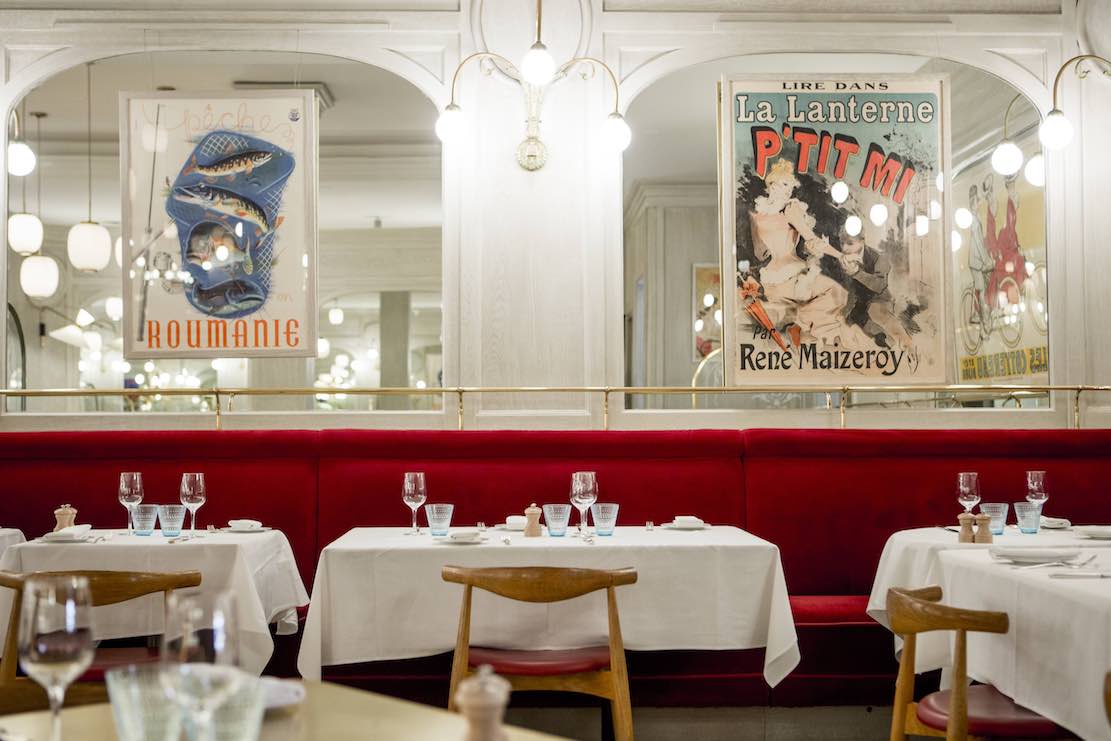 (There is
still jazz entertainment there.) Even
the once inviting façade has been painted bone
white, suggesting a Greek estiatorio. What
once looked like a chic neighborhood bistro now
looks like a drab dining room in a third-rate
hotel in Alsace.
To paraphrase the French cliché, “Plus les choses
changent, plus elles sont mauvaises.”
(There is
still jazz entertainment there.) Even
the once inviting façade has been painted bone
white, suggesting a Greek estiatorio. What
once looked like a chic neighborhood bistro now
looks like a drab dining room in a third-rate
hotel in Alsace.
To paraphrase the French cliché, “Plus les choses
changent, plus elles sont mauvaises.”
The service staff, now
under manager Christopher Charradeau, is quick on
their feet and cordial, although on the night I
was to meet a woman from one of NYC’s premier p.r.
firms--the rez was under her name--I found that
she’d first been seated, in a near empty dining
room, at a table next to the kitchen door. Pas bon.
So, Benoit goes on serving
the same fine bistro food with a new spark from a
new chef who breathes new vitality into the
kitchen, but in its new white dress, the dining
room has lost much of its charm and bonhomie as a
place to soak up that once tantalizing sense of
true French joie de vivre.
❖❖❖
MAKE THEIR DEBUT
By Patricia Savoie
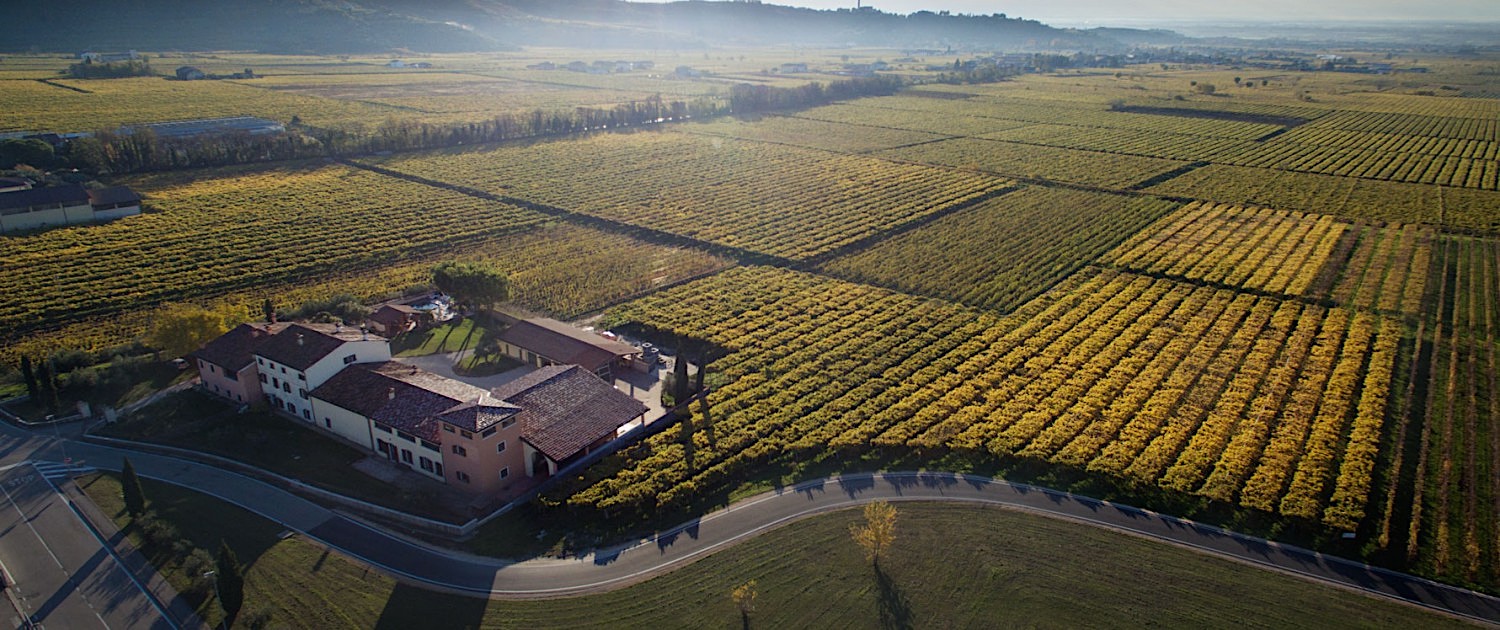
Marco Mosconi Vineyards, Veneto
It’s
official: the 2013 Amarones were released the
weekend of January 28 at Anteprima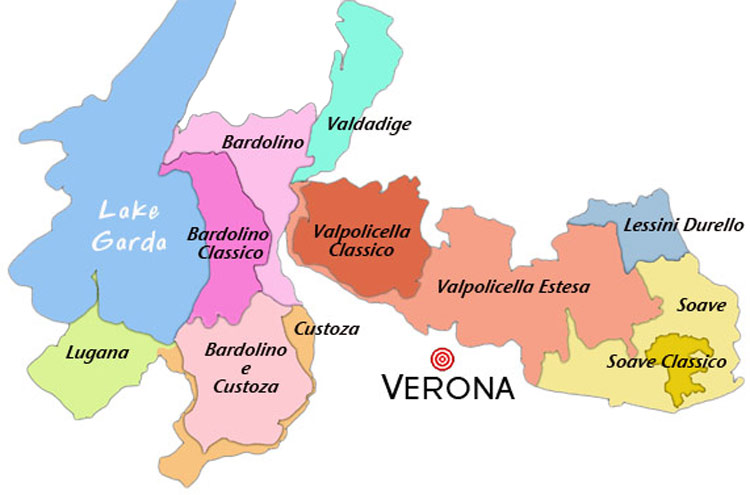 Amarone in Verona,
Italy. Eighty-three producers debuted
wines from the 2013 vintage. That this
vintage is being released only now is a result
of the rules specifying that Amarones must be
aged for at least four years
from the year they are made. "Riserva"
Amarones are cellared even longer. I
attended the Anteprima as a guest of the
Consorzio per la Tutela dei Vini Valpolicella,
which oversees the producers.
Amarone in Verona,
Italy. Eighty-three producers debuted
wines from the 2013 vintage. That this
vintage is being released only now is a result
of the rules specifying that Amarones must be
aged for at least four years
from the year they are made. "Riserva"
Amarones are cellared even longer. I
attended the Anteprima as a guest of the
Consorzio per la Tutela dei Vini Valpolicella,
which oversees the producers.
Amarone della
Valpolicella—its full name—is a full-bodied
red from the
Valpolicella wine zone of northern Italy. Most
Valpolicella wines contain several grapes:
Corvina, Corvinone and Rondinella, plus other
approved red varieties such as Molinara,
Oseletta and Spigamonti. From these grapes come
four different wines—Valpolicella, Valpolicella
Ripasso, Amarone and Recioto—all distinguished
by the amount of time the grapes are left to dry
and by whether they are fermented using the must
of other wines.
 Valpolicella
is the simplest of the four and is easy to
drink. It receives only one year aging. The
current vintage in the market is 2015, with a
few 2016s showing up.
Valpolicella
is the simplest of the four and is easy to
drink. It receives only one year aging. The
current vintage in the market is 2015, with a
few 2016s showing up.
Valpolicella
Ripasso is made by aging the
Valpolicella pressing on the Amarone grape
skins, or must, for anywhere from 15 to 20
days. By using the skins, and putting the wine
through a second fermentation (ripasso), tannins
and
phenolic flavor compounds are absorbed by the
wine, giving it a higher alcohol content, lower
acidity and a pleasant roundness.
Grapes for Amarone are
air-dried in trays (left) for
up to 120 days after harvest. Cold winter
temperatures and air circulated by large fans
help keep mold from attacking. The loss of water
reduces the grape volume by about 40 percent,
but also intensifies
the flavors. Generally, 220
pounds of grapes will produce only
about 10 gallons of Amarone,
resulting in a powerful wine that can
be aged for several decades. Amarones are
aged in oak, often many different types. Alcohol
levels may be as high as 18 percent, with
a legal minimum of 14 percent.
The word Amarone comes from "amaro,”
meaning bitter, not in the sense that it tastes
bitter but that it is less sweet than Recioto,
which is fermented longer. When that
fermentation is stopped early, the resulting
Recioto wine contains more sugar. In 2009
Amarone and Recioto were both promoted to the
status of Denominazione di Origine
Controllata e Guarantita, Italy’s highest wine
designation.
According to the Consorzio per la tutela
dei Vini Valpolicella, the region produced
almost 14.5 million bottles in 2016. More
than 10% goes to the U.S.; the percentages
increase to 14% for Valpolicella and 21% for
Ripasso. When presented with a list of Italian
red wines, 11% of Americans recognize and say
they have drunk Valpolicella wine at least once
over the past year, while 10% have drunk
Amarone. 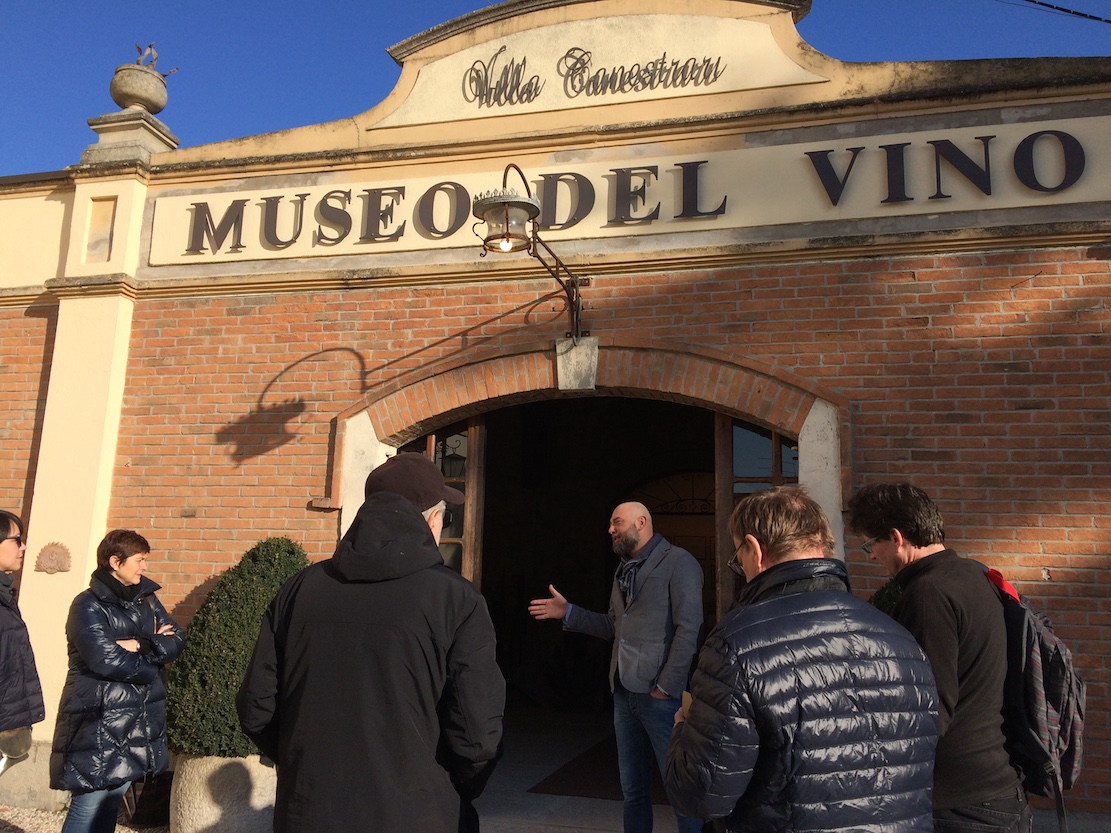 The rate
for Ripasso and Recioto is slightly lower at 9%
and 6%, respectively
The rate
for Ripasso and Recioto is slightly lower at 9%
and 6%, respectively
The 2013 vintage was described
as challenging by winemakers at the Consorzio,
but overall a good vintage. A long winter, rainy
spring and a relatively cool August resulted in
a late ripening of grapes. Most wineries started
harvest at the end
of September or the beginning
of October. But
continuous rains prevented the usual conclusion
of harvesting, especially for the grapes used
for Amarone and Recioto.
When
it rains, vine roots absorb water, diluting
sugar content and taste compounds, and wet
clusters cannot be dried for the production of
Amarone. In the end there was an average
production decrease of about 20-30%, and in
some cases reached 50%.
I visited ten wineries and
spoke with the owners and winemakers, also
tasting older vintages. Of the 80-plus bottles
of Amarone presented at the Anteprima, I
tasted all blind. Most showed good red
fruit—often the typical red cherry notes—and
good acidity. However, many of the wines are
not imported into the U.S. In addition,
although the release of the 2013 vintage was
officially January 2017, many producers do not
release their wines until months or years
later.
Below are a few of my
favorites, all available in the U.S. I’ve
indicated the release date, but I suggest
getting whatever vintage is available. I’ve
also shown latest vintage listed on Wine
Searcher and average price.
Bertani – A veteran winery, founded in
1857, Bertani is a brand that is well known to
American drinkers. The 2011 sells now for
$75.
Vigneti di Ettore – I
visited the winery, a small, family-owned place
where Ettore Righetti and Paolo Grigolli are
winemakers.
They have plantings of some of the
less-available indigenous grapes: Oseleta,
Pelara and Molinara. Only 40,000 bottles come
from their small vineyard. Release date: April
2017. The 2012 is $46.
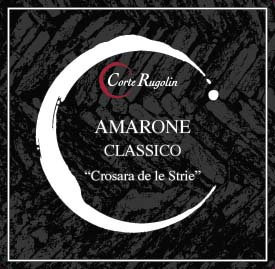
Corte Rugolin –
Started by Elena and Federico Coati in 1998, the
winery is a continuation of their family’s
involvement in grape growing for several
generations. Release date: September 2017. The
2010 is
$50-55.
Bolla – Bolla’s
Soave was one of the first Italian wines
imported into the U.S., beginning in the 1960s.
It is surely one of the first that many readers
remember drinking. The Bolla winery was
established in 1883, making it one of the oldest
wineries in Valpolicella. It has seen multiple
owners, currently the Gruppo Italiano Vini.
Director of the Cantina, Christian Zulian,
recently came from Tuscany, where he worked for
Antinori.
Release date: December 2017. The 2011 is
$32.
Le
Bignele – It is produced by the
Aldrighetti family winery, which was founded in
1818. All harvesting is by hand. Total of 30,000
bottles produced. Release date: late 2017 or
early 2018. The 2012 is $20.
Marco Mosconi –
Mosconi comes from a family of winemakers, and
in 2006 he broke out on his own. His wines are
elegant and structured. Only 10,000 bottles
produced.
Release date: January 2018. The 2011 is
$60.
Riccolo Grassi –
Ricolo Grassi was founded in 1996. Winemaker
Marco Sartori also makes a lovely Valpolicella.
Total production is 50,000 bottles. Release
date: February 2018. The 2012 is $65.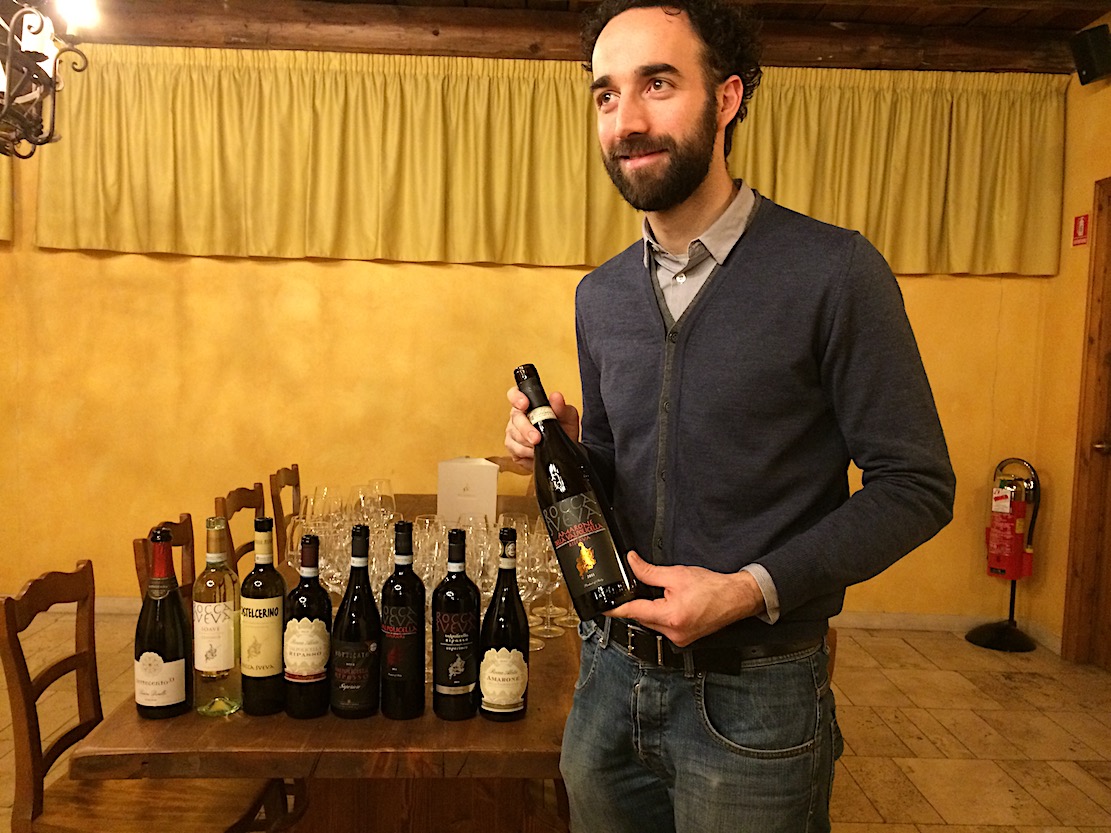
Cantina di Soave –
Located at the food of the mountain on which the
Castle of Soave reigns, the Cantina is one of
the largest producers of Soave. Wine maker
Giancarlo Piubelli (right) also makes a fine
Amarone Rocca Sveva. Release date: Spring 2018.
The 2012 is $26.
Villa Canestrari –The
Bonuzzi and Franchi families founded Canestrari
in 1990. They also created a small but
interesting Wine Museum. Production is a total
of 150,000 bottles. Release date: January 2019.
The 2009 is $42.
Vincola Sartori –
Founded in 1898 in the heart of the Classico
region near Verona. Total production is 2.3
million bottles. Release date: January 2019. The
2012 is $20.
Fidora Monte Tabor – Owners Emilio
and Lawrence Fidora converted the vineyards to
organic in 1974. They produce 150,000+ bottles.
Release date: January 2019. The 2010 is $60.
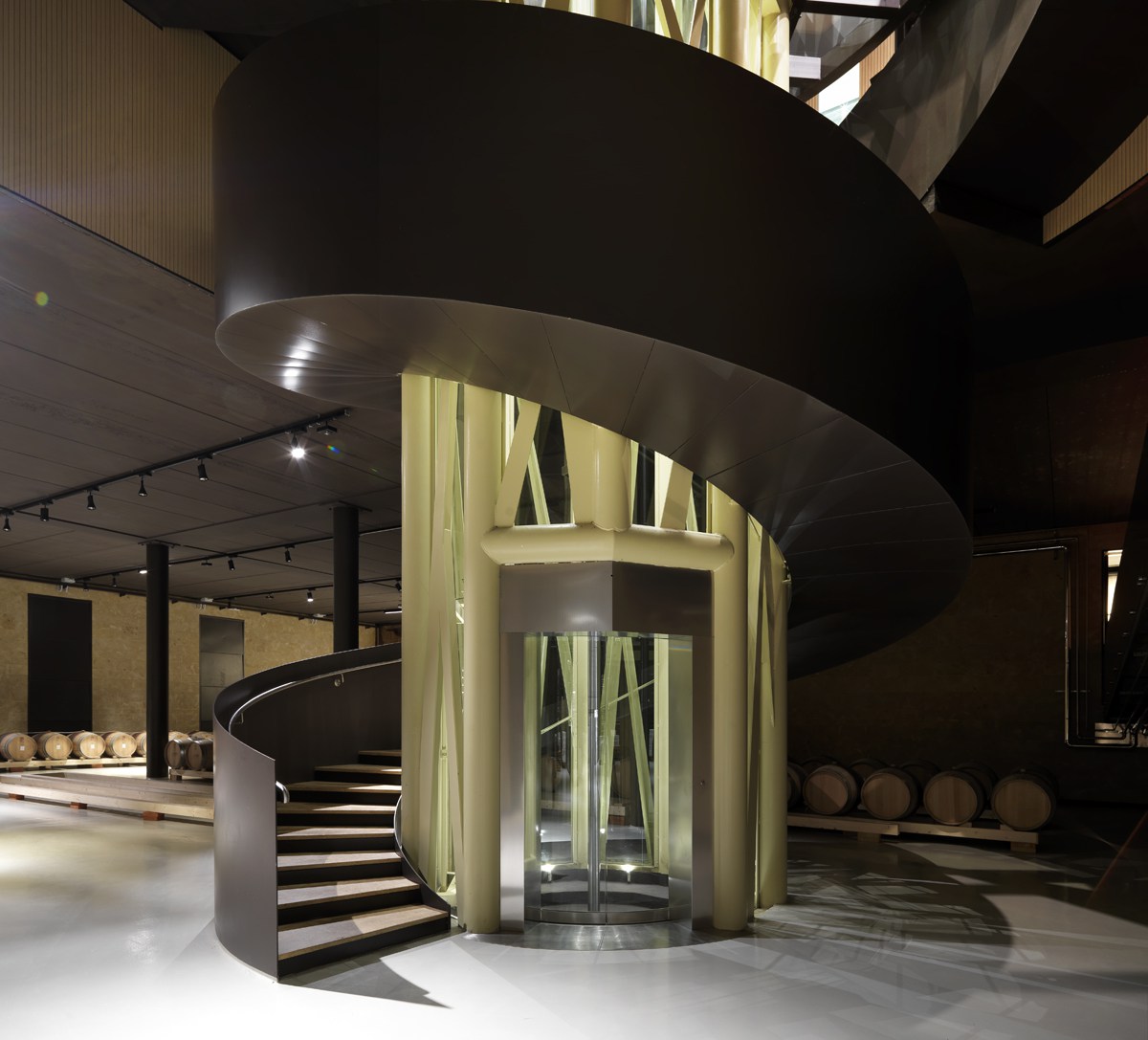
Zỳmē – (left) Founded in 1999 by
Celestino Gaspari, this small winery (its name
means "yeast" in Greek) practices
sustainable vineyard management. Producing only
35,000 bottles, Gaspari none-the-less makes 11
different wines. Release date: January 2020. The
2009 is $145.
❖❖❖
 DEPARTMENT OF ALTERNATIVE
FACTS
DEPARTMENT OF ALTERNATIVE
FACTS
WASHINGTON POST
COVERING A HIGH SCHOOL 
PRODUCTION OF "ANNIE."
“I cover [fast
food restaurants] for a simple reason: People eat at
them. Show up at a Wendy’s in New York at 11:30 p.m. on
a weeknight and you’ll wait in line. Having spent a bit
of time at various outposts of Popeyes, Burger King, and
elsewhere, I can say without equivocation that you’ll
encounter a more diverse crowd there than you would at
most of the restaurants we critics cover.”—Ryan Sutton,
"Ranking
America’s Fast-Food Chicken Nuggets,” Eater.com
(1/18/2017)
Sponsored by Banfi Vintners
ASKA
By John Fodera
TUSCAN VINES
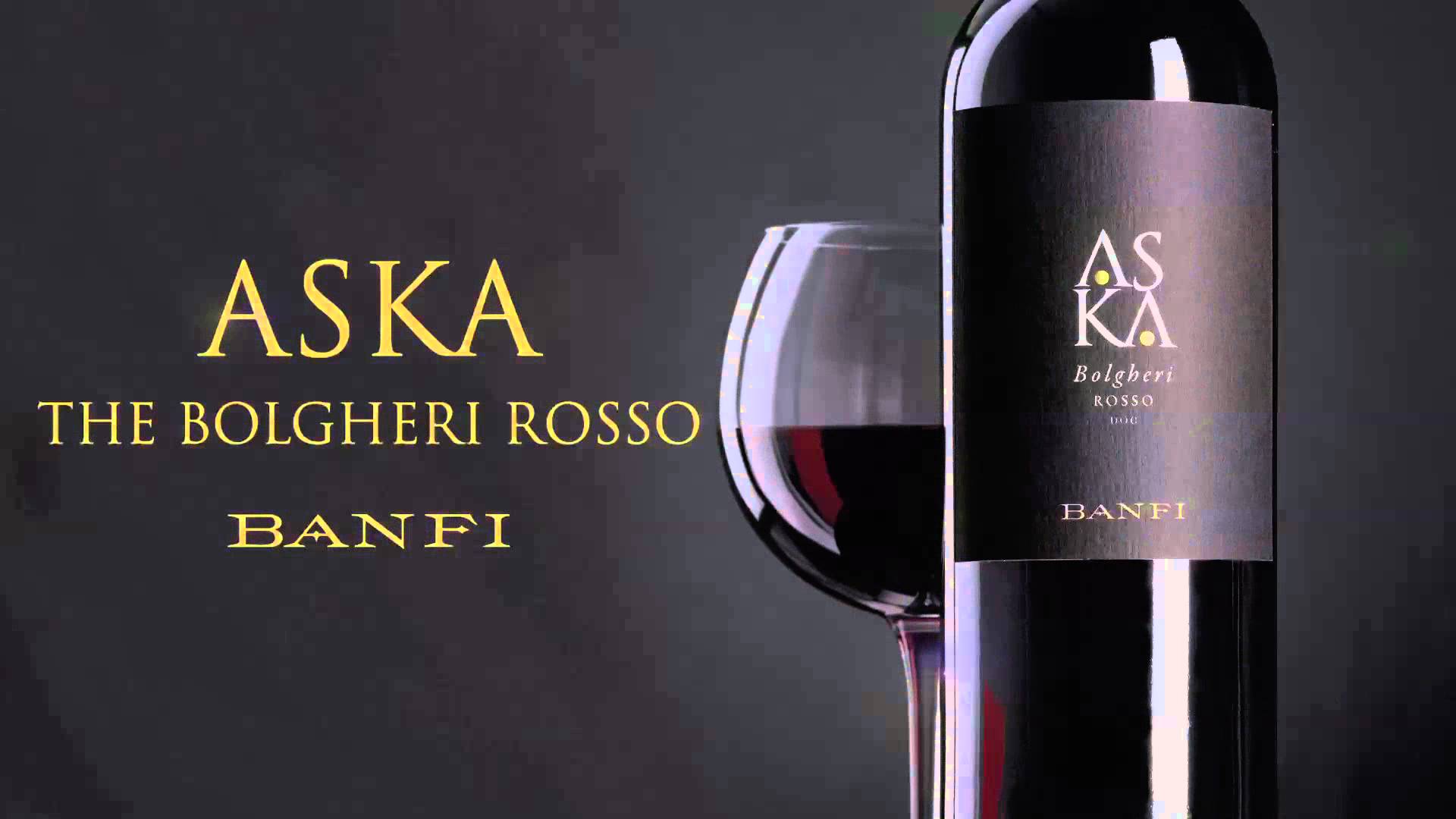 The story of coastal
Tuscany, the Maremma -- or Bolgheri as its
interchangeably referred to -- began with Sassicaia,
but it's not anywhere close to reaching its pinnacle. The region
has been a prime area for nurturing vitis vinifera
into compelling wine for decades.
The story of coastal
Tuscany, the Maremma -- or Bolgheri as its
interchangeably referred to -- began with Sassicaia,
but it's not anywhere close to reaching its pinnacle. The region
has been a prime area for nurturing vitis vinifera
into compelling wine for decades.
As I've written many times, the expansion to
Maremma of wineries based in central Tuscany and even
beyond to Piedmont, has taken on a frenetic pace. The
wild, untamed Maremma countryside, replete with water
buffalo, wild horses, and cowboys called butteri, has become
the perfect cradle for cultivation of classic
Bordelaise varieties.
Castello Banfi acquired 5 small hectares of
vineyards along the Tuscan coast with the aim of
producing a classic Cabernet-based wine that portrayed
the hallmarks of their elegant style. The result,
Aska. The
legend relates that
Aska is
the ancient Etruscan name for "wine vessel". These
ancient people, who called Tuscany home a millennia
ago, used Askas to
contain and transport wine and olive oil.
Aska was a touchstone for the Etruscans
because they believed that beneficial human emotions
were conferred by the Etruscan Gods of Sun and Moon. This legend
is symbolized by the two luminous discs on the wine's
label. First released in the 2012 vintage, Aska is
predominantly Cabernet Sauvignon with minor additions
of Cabernet Franc.
The vineyards giving the fruit are young, and
the debut release of Aska was elegant and
approachable. I
harbor the same sentiment for the subject of today's
review and look forward to following this vineyard as
it develops. We decanted the 2013 Banfi Aska for about
45 minutes before dinner, a simple pasta with earthy
flavors of wild boar and chanterelles.boar and chan
In
the glass, the wine exudes aromas of crushed red
plums, cherries, soft vanilla and spice notes and a
faint hint of pine.
It's attractive to smell. On
the palate, the flavors echo the nose with primary red
plum flavors backed by soft wood and vanilla notes. The round,
elegant mouth feel trails off delicately and there is
little "bite" from the well-integrated tannins. This wine
stays fresh and lively and will be best enjoyed over
the next 3-4 years.
Aska is vinified in stainless steel and then
transferred to French barriques for 10 months
of
refinement. A brief bottle aging takes place before
release.
Any of John Mariani's books below may be ordered from amazon.com.
 The
Hound in Heaven (21st Century Lion Books)
is a novella, and for anyone who loves dogs,
Christmas, romance, inspiration, even the supernatural, I
hope you'll find this to be a treasured favorite.
The story concerns how, after a New England teacher,
his wife and their two daughters adopt a stray puppy found
in their barn in northern Maine, their lives seem full of
promise. But when tragedy strikes, their wonderful dog
Lazarus and the spirit of Christmas are the only things
that may bring his master back from the edge of
despair.
The
Hound in Heaven (21st Century Lion Books)
is a novella, and for anyone who loves dogs,
Christmas, romance, inspiration, even the supernatural, I
hope you'll find this to be a treasured favorite.
The story concerns how, after a New England teacher,
his wife and their two daughters adopt a stray puppy found
in their barn in northern Maine, their lives seem full of
promise. But when tragedy strikes, their wonderful dog
Lazarus and the spirit of Christmas are the only things
that may bring his master back from the edge of
despair. WATCH THE VIDEO!
“What a huge surprise turn this story took! I was completely stunned! I truly enjoyed this book and its message.” – Actress Ali MacGraw
“He had me at Page One. The amount of heart, human insight, soul searching, and deft literary strength that John Mariani pours into this airtight novella is vertigo-inducing. Perhaps ‘wow’ would be the best comment.” – James Dalessandro, author of Bohemian Heart and 1906.
“John Mariani’s Hound in Heaven starts with a well-painted portrayal of an American family, along with the requisite dog. A surprise event flips the action of the novel and captures us for a voyage leading to a hopeful and heart-warming message. A page turning, one sitting read, it’s the perfect antidote for the winter and promotion of holiday celebration.” – Ann Pearlman, author of The Christmas Cookie Club and A Gift for my Sister.
“John Mariani’s concise, achingly beautiful novella pulls a literary rabbit out of a hat – a mash-up of the cosmic and the intimate, the tragic and the heart-warming – a Christmas tale for all ages, and all faiths. Read it to your children, read it to yourself… but read it. Early and often. Highly recommended.” – Jay Bonansinga, New York Times bestselling author of Pinkerton’s War, The Sinking of The Eastland, and The Walking Dead: The Road To Woodbury.
“Amazing things happen when you open your heart to an animal. The Hound in Heaven delivers a powerful story of healing that is forged in the spiritual relationship between a man and his best friend. The book brings a message of hope that can enrich our images of family, love, and loss.” – Dr. Barbara Royal, author of The Royal Treatment.
 |
The Encyclopedia of American Food and Drink by John F. Mariani (Bloomsbury USA, $35) Modesty forbids me to praise my own new book, but let me proudly say that it is an extensive revision of the 4th edition that appeared more than a decade ago, before locavores, molecular cuisine, modernist cuisine, the Food Network and so much more, now included. Word origins have been completely updated, as have per capita consumption and production stats. Most important, for the first time since publication in the 1980s, the book includes more than 100 biographies of Americans who have changed the way we cook, eat and drink -- from Fannie Farmer and Julia Child to Robert Mondavi and Thomas Keller. "This book is amazing! It has entries for everything from `abalone' to `zwieback,' plus more than 500 recipes for classic American dishes and drinks."--Devra First, The Boston Globe. "Much needed in any kitchen library."--Bon Appetit. |
"Eating Italian will never be the same after reading John Mariani's entertaining and savory gastronomical history of the cuisine of Italy and how it won over appetites worldwide. . . . This book is such a tasteful narrative that it will literally make you hungry for Italian food and arouse your appetite for gastronomical history."--Don Oldenburg, USA Today. "Italian
restaurants--some good, some glitzy--far
outnumber their French rivals. Many of
these establishments are zestfully described
in How Italian Food Conquered the World, an
entertaining and fact-filled chronicle by
food-and-wine correspondent John F.
Mariani."--Aram Bakshian Jr., Wall Street
Journal.
"Equal parts
history, sociology, gastronomy, and just
plain fun, How Italian Food Conquered the
World tells the captivating and delicious
story of the (let's face it) everybody's
favorite cuisine with clarity, verve and
more than one surprise."--Colman Andrews,
editorial director of The Daily
Meal.com. "A fantastic and fascinating
read, covering everything from the influence
of Venice's spice trade to the impact of
Italian immigrants in America and the
evolution of alta cucina. This book will
serve as a terrific resource to anyone
interested in the real story of Italian
food."--Mary Ann Esposito, host of PBS-TV's
Ciao
Italia. "John Mariani has written the
definitive history of how Italians won their
way into our hearts, minds, and
stomachs. It's a story of pleasure over
pomp and taste over technique."--Danny Meyer,
owner of NYC restaurants Union Square
Cafe, The Modern, and Maialino.
|
 |
 |
 |
 |
 |
 |
 |
 |
 Everett Potter's Travel Report:
Everett Potter's Travel Report: 
 Eating Las Vegas
JOHN CURTAS has been covering the Las Vegas
food and restaurant scene since 1995. He is
the co-author of EATING LAS VEGAS – The 50
Essential Restaurants (the fourth
edition of which will be published in early
2016), as well as the author of the Eating Las
Vegas web site: www.eatinglasvegas.
He can also be seen every Friday morning as
the “resident foodie” for Wake Up With the
Wagners on KSNV TV (NBC) Channel 3 in
Las Vegas.
Eating Las Vegas
JOHN CURTAS has been covering the Las Vegas
food and restaurant scene since 1995. He is
the co-author of EATING LAS VEGAS – The 50
Essential Restaurants (the fourth
edition of which will be published in early
2016), as well as the author of the Eating Las
Vegas web site: www.eatinglasvegas.
He can also be seen every Friday morning as
the “resident foodie” for Wake Up With the
Wagners on KSNV TV (NBC) Channel 3 in
Las Vegas.

MARIANI'S VIRTUAL GOURMET
NEWSLETTER is published weekly. Editor/Publisher: John
Mariani.
Editor: Walter Bagley. Contributing Writers: Christopher Mariani,
Robert Mariani, Misha Mariani, John A. Curtas, Geoff Kalish, Mort
Hochstein, and
Brian Freedman. Contributing Photographers: Galina
Dargery. Technical Advisor: Gerry McLoughlin.
To un-subscribe from this newsletter,click here.
© copyright John Mariani 2017

